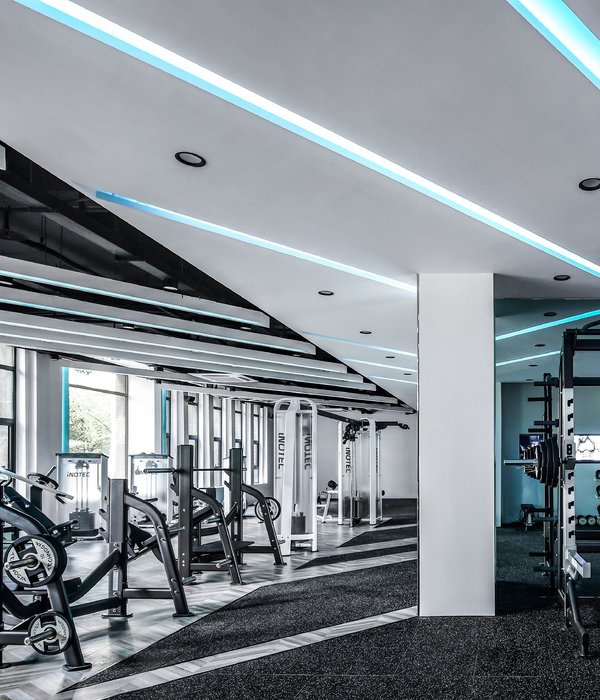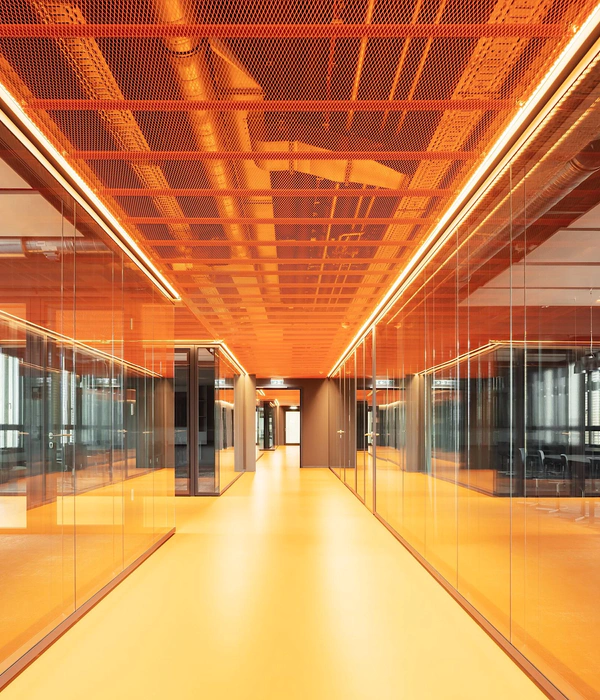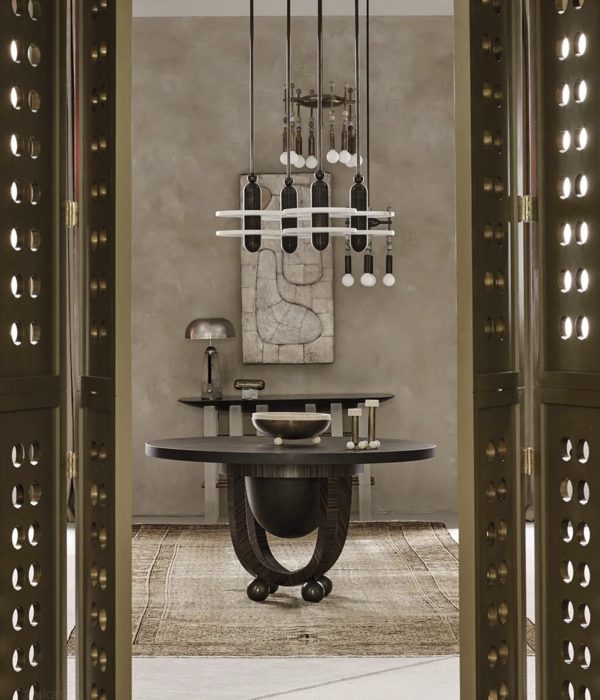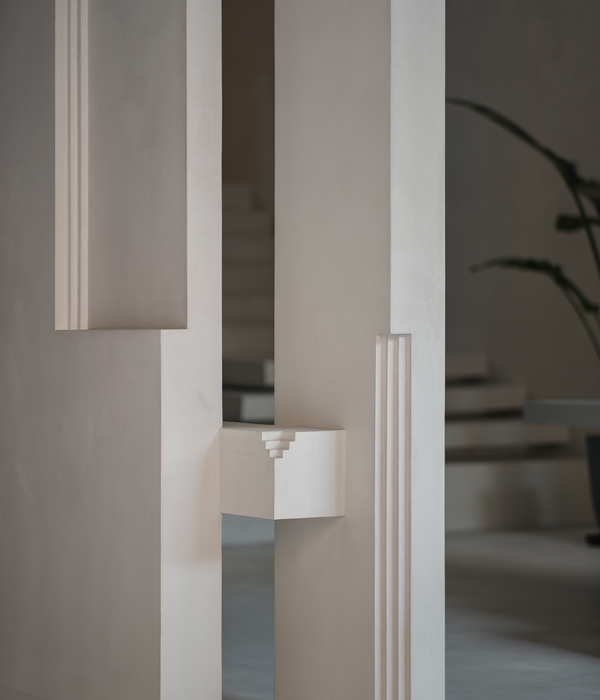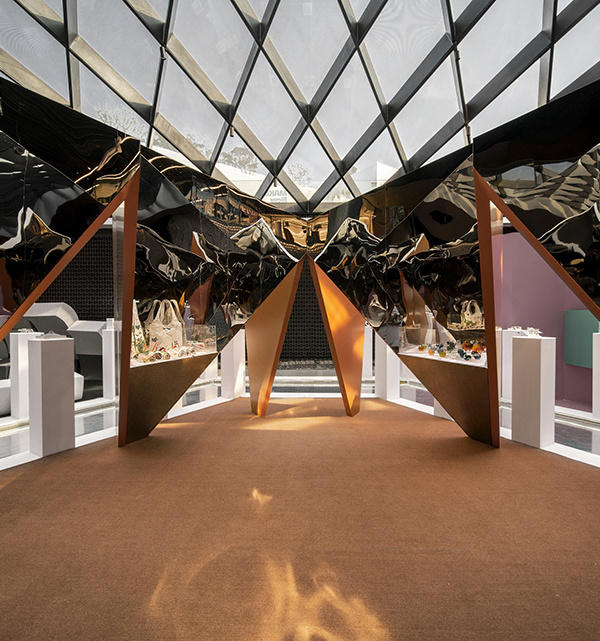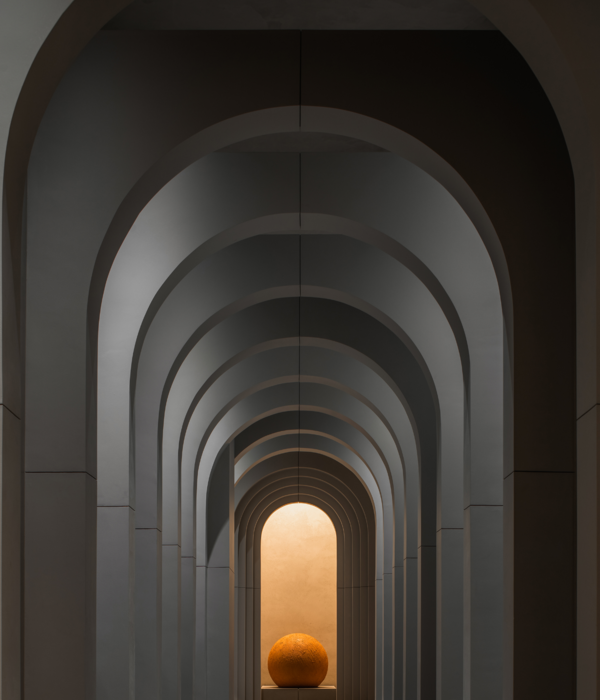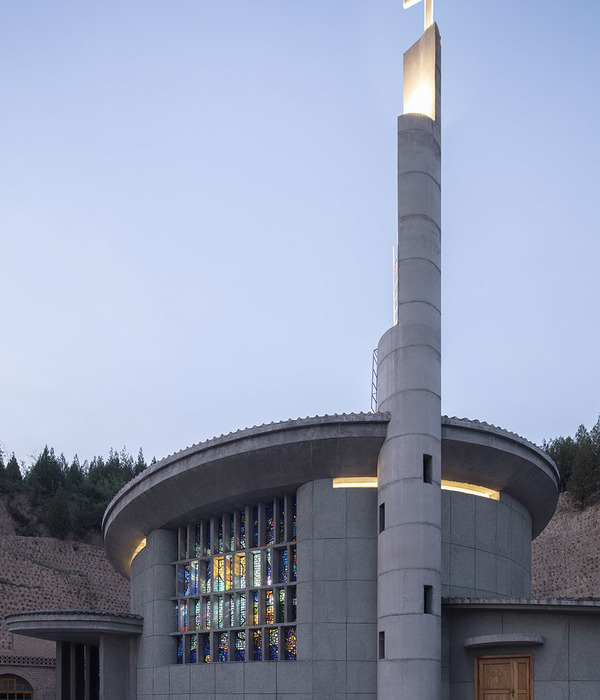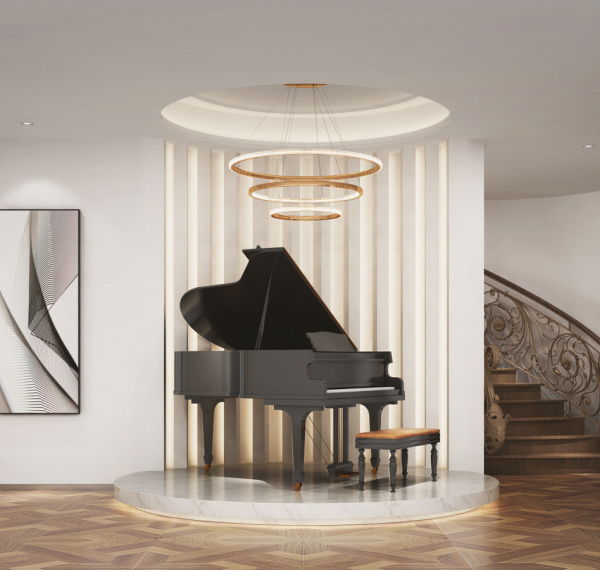Can Sau house的大半部分体量因受街道调整的影响而被拆除,留下一个以党派墙和四个阶梯式扶壁为特征,且正对着奥洛特守护神教堂的城市空地。其之前所在的奥洛特旧城区有许多上了年限的待拆建筑。在那里,废弃的地段、城市化的丧失、被“毁容”的街道和被破坏的原始景观随处可见。
▼被部分拆除后、进行项目改造之前的建筑状况, the condition of the building after partial demolition and before the renovation of the project © Junparelld’arquitectes
Can Sau house was located in the old city centre of Olot, where nowadays demolitions are not unusual. Given that half of the building was affected by street alignment, it was demolished, leaving an urban void characterized by a party wall and four stepped buttresses that faced the side façade of the church of the patron saint of Olot. For different reasons, the same consequences: abandoned lots, loss of urbanity, disfigurement of the street, destruction of the ordinary landscape.
▼街道视角下的建筑景观,street view © José Hevia
▼项目全貌,overview © José Hevia
根据路面工程和正在进行的防水金属包层合同的要求,项目团队重新制定了分配方案。在保证党墙防水性能的同时,团队还需要在竖向平面上配置资源以赋予空间以城市气息。在拥挤的城市中,立面具有塑造街道形状和特征的独特功能。
Upon request for a pavement project and an ongoing contract for a waterproof metal cladding, the assignment was reformulated. It was urgent to allocate resources to the vertical plane to endow the space with urbanity, apart from guaranteeing the waterproof qualities of the party wall. In the compact city, the façades take responsibility for giving shape and character to the street.
▼景观细部,details © José Hevia
用空心砖打造的应急景观填满了扶壁的空缺,在党墙背景中展现出政务活动的痕迹。三个拱顶和四个壁龛既充当了多孔立面,也给公众提供了伴有少量看台的公共空间。此外,视觉艺术家Quim Domene还在壁龛中插入了寓意着该社区历史元素的印花玻璃。
▼在夜晚,at night © José Hevia
With hollow brick, an emergency scenery was built. It completes what the buttresses suggest, revealing in the background the traces of domestic activity marked on the party wall. A construction of three vaults and four niches is offered to the public space as a porous façade, accompanied by a minimum of stands. The visual artist Quim Domene intervenes a posteriori in the niches, with elements allegorical to the history of the neighborhood.
▼艺术家Quim Domene打造的历史元素印花玻璃, artist Quim Domene creates the historical element print glass © José Hevia
被限制在狭窄街道之间的图拉教堂,如今获得了一个可供人们观赏和休憩的公共空间。
The Tura church, confined between narrow streets, now gains a public space, presided by the blinded door of the previous temple of the XV century.
▼社区活动,community activity © Roger Serrat-Calvó
▼轴测图,axonometric drawing © unparelld’arquitectes
▼改造过程的平面图变化, change of plan of transformation process © unparelld’arquitectes
▼平面图&立面图,plan and elevation © unparelld’arquitectes
Situation:Can Sau. Carrer Valls Nous, 1. 17800 Olot 42.182175, 2.491457 Authors:unparelld’arquitectes: Eduard Callís, Guillem Moliner Quim Domene, artista visual Design and construction team:Clàudia Calvet, Xevi Rodeja, Sara Palmada, Sergi Jiménez Structural Designer:Amaia López Building Engineer:Gemma Planagumà (Olot town hall) Client:Olot town hall Builder:Construo Construccions Generals Photographs:José Hevia, Roger Serrat-Calvó, Esteve Moner, 1904. Arxiu Comarcal de la Garrotxa. Col·lecció d’imatges de Josep Ma. Dou Camps Gross Built Area:113 m² Project:2018 Completion:2019
{{item.text_origin}}


